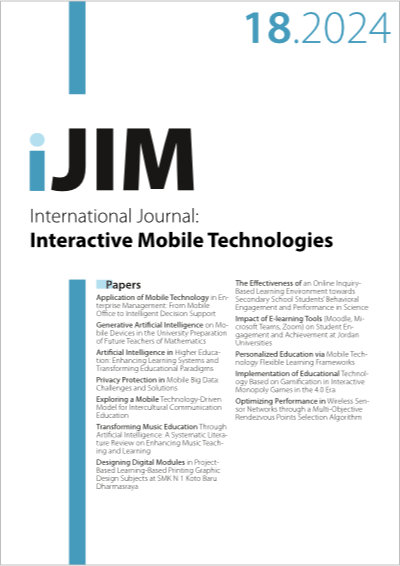Optimizing Performance in Wireless Sensor Networks through a Multi-Objective Rendezvous Points Selection Algorithm
DOI:
https://doi.org/10.3991/ijim.v18i18.45923Keywords:
WSNs , hot points , sink, mobile sink (MS), sensors, network, rendezvous points , MOOVor ,HMV.Abstract
Wireless sensor networks (WSNs) play a vital role in modern research and applications due to their potential to gather data from various environments. Because sensor nodes (SNs) within WSNs have limited battery life, those in close proximity to the sink often experience rapid power depletion, leading to the emergence of hotspot issues. To address this, the concept of a mobile sink (MS) has emerged as a potential solution, effectively mitigating power usage in SNs and thereby extending the network’s overall lifespan. Furthermore, many sensor-based applications necessitate specific data collection timeframes, underscoring the necessity of effective strategies. Leveraging rendezvous points (RPs) to enhance network efficiency becomes imperative in enabling the MS to efficiently collect data from all SNs within designated time periods. A sophisticated cost function is employed to strategically determine RPs, considering multiple factors that influence the efficacy of each RP. This process culminates in the selection of RPs, optimizing for the longest path with minimal delays. Through the proposed hybrid mobile vehicle (HMV) method, compared against the prevailing MOOVor method, significant enhancements are observed in terms of sensor coverage and reduced hop count within the network.
Downloads
Published
How to Cite
Issue
Section
License
Copyright (c) 2024 Ghassan Samara, Wafaa Alzyoud, Mohammad Aljaidi, Raed Alazaidah, Mais Haj Qasem, Essam Aldaoud

This work is licensed under a Creative Commons Attribution 4.0 International License.



